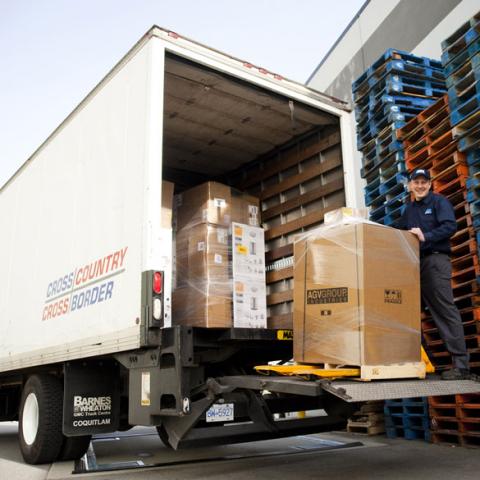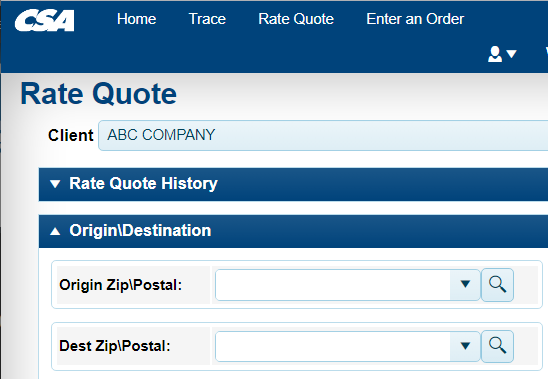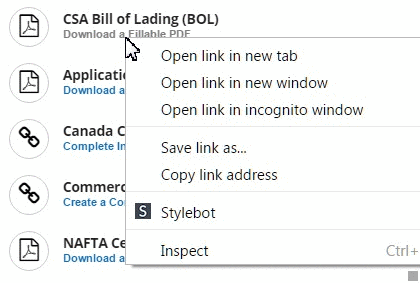Cheapest Ways to Ship a Box Internationally: A Complete Guide
Shipping a box domestically is as easy as choosing a carrier, scheduling a pickup, and letting the carrier take care of the rest. On the other hand, shipping internationally has wrinkles, including additional charges, transit times, and clearing customs on the other side.
There has been an increased demand for reliable international shipping recently, with eCommerce retail sales expected to grow by 14.1% in 2022. It leaves small and large businesses trying to figure out the cheapest way to ship a box internationally.
Prevent expensive mishaps by doing your research on international shipping. We’ll go through everything you need regarding budget shipping, including the factors influencing the cost.
How to Ship Small Items for Cheap
Shipping small items is typically more expensive for smaller companies than for larger businesses that can command bulk rates. With this in mind, optimizing your supply chain can yield the cheapest shipping for small packages.
Here are some of the most cost-effective ways to ship your items.
Compare Carriers
Cheap courier services are available. Be aware that the faster you want your item to arrive at its destination, the more you can expect to pay.
Do your research to pinpoint the cheapest eCommerce shipping options. However, price alone shouldn’t be the sole reason you choose a specific carrier. Inexpensive carriers may have a low price tag, but it could mean compromising on speed, reliability, and features like real-time tracking.
Buy Your Supplies in Bulk
Shipping rates have climbed since 2020 due to the disruption to global supply chains and soaring inflation. According to the Wall Street Journal, domestic shipping costs in 2021 increased by 23% compared to 2020.
These figures only account for shipping. Get back some of those extra costs by purchasing your shipping supplies in bulk.
Bulk buying ensures you get a lower per-unit price for your shipping supplies. Small eCommerce operations can benefit the most from buying bulk supplies in anticipation of future shipping needs.
Optimize Dimensions and Weight
The cheapest cargo is compact and light. Larger, heavier items always cost more to ship, domestically or internationally.
Think about your package design and whether you have too much free space. Extra space could put you in a more expensive shipping category. Likewise, weight is another crucial factor. Choose lightweight packaging offering the same protection for a lower price.
Polythene is one material offering puncture resistance, a high impact rating, and low friction levels.
Ship in Bulk
Some companies make bulk shipments to reduce shipping costs. One of the most cost-effective ways to ship is by shrink-wrapping multiple packages into a pallet.
It’s a significant advantage over individual packages because you could qualify for bulk rates and receive the same great service. Moreover, you can track multiple packages simultaneously rather than hunting for multiple tracking numbers.
Understandably, bulk shipping with shrink wrapping to a pallet may not be possible for some operations, but it’s an excellent hack to integrate into your supply chain.
What is the Cheapest Way to Ship a Box Internationally?
The cheapest shipping for small packages requires you to sift through a patchwork of carriers and transit options.
Here are the best choices if you’re looking for the cheapest ways to ship a small box:
Air Freight
Air freight is the fastest option for getting your package from one country to another.
However, air freight isn’t cost-effective unless you're shipping high-value items.
Furthermore, going directly to an air freight company typically means managing the customs aspect yourself or hiring a third-party customs agent.
Pros
- Fast
- Extensive global reach
- Increased safety
- Accurate shipping times
Cons
- Costly
- Customs headaches
- Transit to and from the airport may not be included
- Strict load capacities
Sea Freight/Container Shipping
Opt to transport your goods by sea, which will be loaded via a large shipping container. Container shipping remains expensive but is up to 50% cheaper than sending goods by air.
Depending on your destination, customs processes may be incredibly complex, and your shipping agent may or may not offer support in getting your items through.
The apparent downside is sea freight is the slowest option. Remember to factor in your freight’s land journey to its final destination.
Pros
- Cost-effective solution
- More load capacity
- Increased product diversity
Cons
- Slow shipping times
- Ports can be far away from your intended destination
- Bad weather can cause unexpected delays
Road Transit
Road transit is ideal if you are shipping to Canada, the U.S., or Latin America. It’s the cheapest shipping for a small package because shipping on the ground usually costs far less than air freight.
It’s also the most flexible and agile shipping option, allowing you to quickly get your goods to their destinations without waiting for a place on a ship or a flight.
The disadvantage of road transit is you’re limited to North and South America. Anything you need to send to Europe, Asia, or Oceania must go by sea or air.
Pros
- The cheapest shipping option
- Additional flexibility
- Maximum traceability through GPS technology
- Door-to-door service
- Less paperwork
Cons
- Less load capacity
- Traffic delays
- Reliant on local infrastructure
Factors that Affect the Cost
Did you know that 40% of Americans receive at least one Amazon package per week? Add in Shopify and other eCommerce platforms, and the demand for eCommerce is apparent.
Whether turning your hobby into a side hustle or running a flourishing business, creating a global link to your brand is crucial. Finding the cheapest way to ship cards with tracking or transport large, heavy items is pivotal to maintaining healthy profit margins.
Several factors impact how much you can expect to pay to ship internationally.
Size
The dimensions of your package will be the first thing your carrier measures. Packages with larger dimensions will take up more space on the truck, ship, or aircraft. More space means fewer clients served.
Your carrier will charge you more to overcome this problem. The same goes for non-standard-sized packages. Think about how you can redesign your boxes to reduce size without compromising protection.
Shrink-wrapping and attaching to a pallet can help you avoid the problem of being charged extra for packages with awkward dimensions.
Weight
Every package will be weighed before being shipped. Each shipping method has a maximum load capacity. Legally, your carrier cannot go over this limit.
Larger weights will incur extra fees. Ensure you already know how heavy your standard packages are. Being a single pound over the limit can elevate you into a more expensive weight category.
Choosing lightweight packaging materials and removing any added extras inside your boxes can reduce the weight.
Destination
Your destination, or distance, is another major factor in how much you can expect to pay to ship your package. Most carriers split the world into convenient shipping zones.
For example, the most expensive zones tend to be locations like Australia and New Zealand due to their relative remoteness. Sending a package to Canada or Mexico is the cheapest option.
Deciding whether to expand into new markets and what to charge must involve factoring in shipping costs. It’s not uncommon for eCommerce brands to add surcharges to customers in particular locations.
Your destination can also yield other difficulties. Certain destinations that receive fewer deliveries, such as Central Asia or Central Africa, may require paying more.
For example, if you were shipping a box to a nation like Mongolia, you would be limited in your options for a timely delivery. As a landlocked nation, sea freight is off the table. Road transit could also present difficulties due to international border disputes.
Some destinations may require a combination of shipping options to get your goods to the finishing line. The more complex the supply chain, the more you can expect to pay.
Required Speed of Delivery
Global shipping is a tricky business. Your goods might not go straight to their destination. Instead, your goods are often picked up, transported to a distribution center, and then sent to their rallying point.
Unless you’re renting the truck, your goods will usually be shipped together with products from other businesses. Once across the border, your goods must clear customs before moving onto a distribution center in your target country. Only then will your package finally be on its way to your customer.
Opting for a faster delivery speed means your products gain priority. They’ll skip many of the usual steps to get to your customers quicker. It’s not inconceivable for your products to reach an overseas customer in just a few days.
The faster your delivery speed, the more you can expect to pay.
Work with the Shipping Experts
Are you still wondering about the cheapest way to ship a box internationally?
Contact our friendly customer support team at CSA Transportation. We understand how complex international shipping can be, but with 40 years of experience, you’re in good hands. Collaborate with us to develop the shipping solution that suits your needs.
Whether shipping domestically or choosing our premium freight shipping from the USA to Canada, get in touch with CSA Transportation now.





